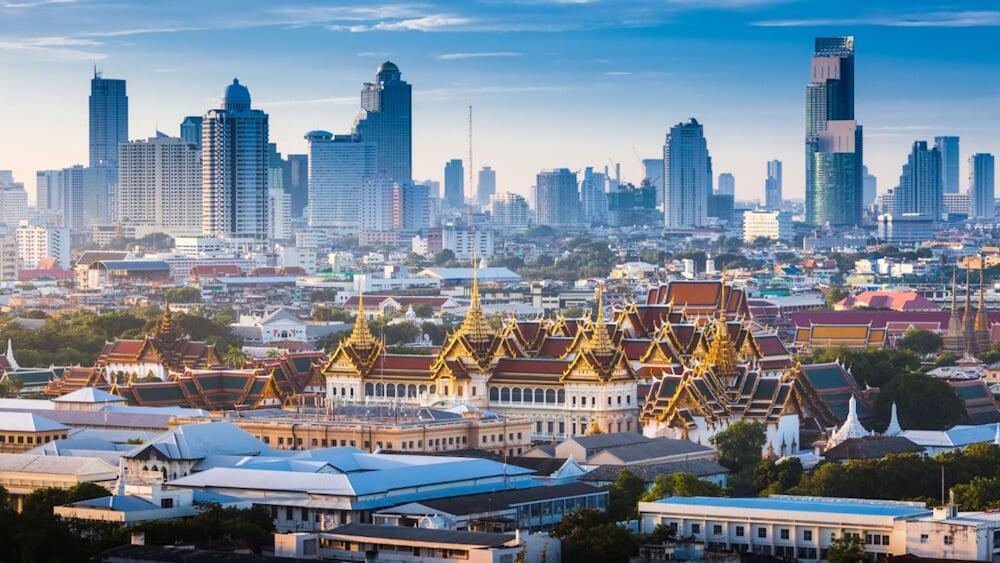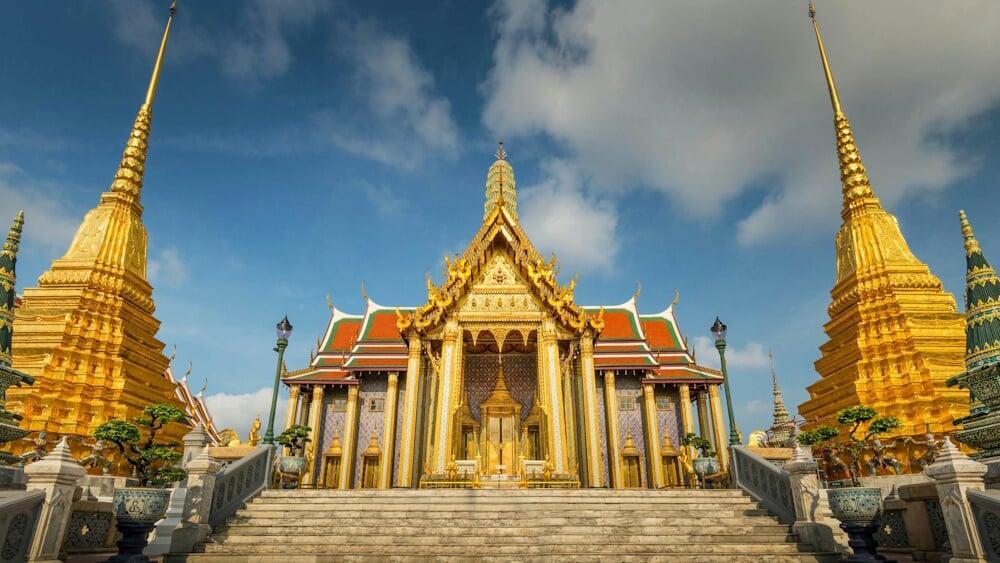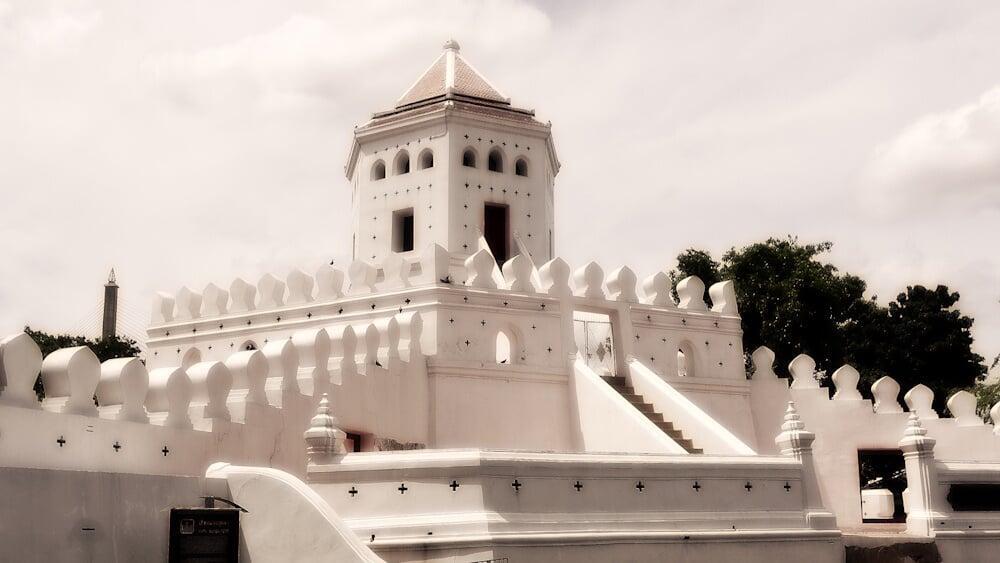Known by various names, including the Rattanakosin Kingdom, the Kingdom of Siam, and the Early Bangkok Empire, this era began in 1767 and represents the fourth major phase in Thailand's storied history, previously known as Siam. The phases are: the Early Rattanakosin Period (1782–1855), Early Modern Siam (1855–1909), Modern Siam (1910–1932), and Contemporary Thailand (since 1933; Siam was renamed Thailand in 1949, up to the present day). This period commenced in 1782 with Bangkok's emergence as the new capital under the leadership of the Chakri Dynasty, succeeding Thonburi. In 1785, King Rama I performed a full coronation ceremony and named the new city "Rattanakosin", which means "Jewel of Indra", referring to the Emerald Buddha.



Rattanakosin era commenced in 1782 with Bangkok's emergence as the new capital under the Chakri Dynasty
Known by various names, including the Rattanakosin Kingdom, the Kingdom of Siam, and the Early Bangkok Empire, this era began in 1767 and represents the fourth major phase in Thailand's storied history, previously known as Siam. The phases are: the Early Rattanakosin Period (1782–1855), Early Modern Siam (1855–1909), Modern Siam (1910–1932), and Contemporary Thailand (since 1933, up to the present day).
This period commenced in 1782 with Bangkok's emergence as the new capital under the leadership of the Chakri Dynasty, succeeding Thonburi. In 1785, King Rama I performed a full coronation ceremony and named the new city "Rattanakosin", which means "Jewel of Indra", referring to the Emerald Buddha.
While some scholars mark its conclusion in 1932 with the transformative Siamese revolution, which saw the transition from an absolute to a constitutional monarchy and the inauguration of the country's first parliament at Ananta Samakhom Throne Hall in Dusit (the hall served as the seat of the legislative branch until 1974, when the new Parliament House was opened to the north), others view the era as extending into the present, noting the ongoing reign of the Chakri dynasty.
This era saw the Kingdom's influence extend over Cambodia, Laos, the Shan States, and parts of what is now Malaysia, under the leadership of Rama I, the founder of the Chakri dynasty. The early years were defined by efforts to consolidate Siamese dominance in the region, engaging in power struggles with Burma and Vietnam. Later, the kingdom navigated the complexities of European colonial ambitions, standing as the sole Southeast Asian nation to maintain its sovereignty against British and French pressures.
Domestically, the kingdom evolved into a highly centralised and absolutist state, with clearly defined borders emerging from interactions with Western powers. This period witnessed significant shifts towards the centralisation of royal authority, the eradication of forced labour, a transition towards an agrarian-based economy, tightening control over distant vassal states, the crafting of a unified national identity, and the rise of an urban middle class. Despite these advances, the kingdom's reluctance to embrace democratic reforms ultimately led to the 1932 revolution, paving the way for a constitutional monarchy, against the backdrop of the looming Second World War.
Early Rattanakosin period (1782–1855)
Under the regnal name Ramathibodi, more widely recognized as King Rama I, the monarch made a strategic relocation of the capital from Thonburi, positioned on the west bank of the Chao Phraya River, to a small village named Bang Makok on the east bank, a name translating to "place of olive plums."
This move was primarily motivated by the location's superior defensive advantages against potential Burmese assaults from the west. Not only was the site naturally shielded by the river to its west, but a network of canals on the other three sides further fortified it. The eastern territories, characterized by marshlands and populated by Chinese settlers, saw these residents being directed to relocate to Sampheng by King Rama I.
Bangkok's inception as the capital was officially marked on April 21, 1782, with the sacred city pillar ceremony. That same year, King Rama I was briefly crowned, establishing the Chakri dynasty and appointing his younger brother as the Wangna or Prince Sura Singhanat of the Front Palace. By 1783, the construction of the city's fortifications commenced, intriguingly utilizing bricks from the ruins of Ayutthaya. The labor force comprised Lao and Cambodian workers tasked with excavating the city's moat. The subsequent year witnessed the completion of the Grand Palace and Wat Phra Kaew, alongside the relocation of the revered Emerald Buddha from Wat Arun to Wat Phra Kaew.
In 1785, a comprehensive coronation ceremony was conducted by King Rama I, who then christened the burgeoning city "Rattanakosin," meaning the "Jewel of Indra" in homage to the Emerald Buddha.
While the Emerald Buddha rested peacefully in Vientiane's Phra Kaeo for two centuries, significant upheavals were unfolding in the neighboring kingdom of Siam. The darkest hour struck in 1767 when Ayutthaya, Siam's illustrious capital, fell to Burmese forces from Inwa, leaving the city in ruins. This catastrophic event set the stage for what would eventually shape the nation now known as Thailand.
Despite the severe blow of losing Ayutthaya, which was among the globe's largest urban centers at the time, the Siamese people did not succumb to despair. Coincidentally, the Burmese were contending with their own problems, facing aggression from China. This forced them to withdraw many of their troops from Siam, creating an opportunity for the Siamese. Under the leadership of General Taksin, the Siamese recognized this vulnerability and rallied to reclaim their homeland.
Once crowned king of Thonburi, Taksin skilfully consolidated several Siamese regions that had slipped from Burmese control. Additionally, he garnered support from the Lanna Kingdom, which, tired of Burmese dominion, sided with Siam in its rebellion. King Taksin’s efforts not only expelled the Burmese from Siam but also brought Lanna into his sphere of influence. With the ruins of Ayutthaya behind them, King Taksin laid the foundations for a new capital at Thonburi, situated 90km downstream along the Chao Phraya river, marking a new chapter for Siam.
King Taksin's ambitions grew alongside his successes. In 1778, spearheaded by his esteemed general, Chaophraya Chakri (the future King Rama I), the Siamese army invaded the Kingdom of Vientiane. This operation saw the Emerald Buddha return to Siam, marking its second homecoming, alongside the capture of the Phra Bang statue. These sacred icons were housed in Wat Arun, Thonburi’s most distinguished temple, under Taksin's watchful eye, signifying not just a territorial victory but a cultural triumph as well.

